Critiquing Hate Crimes Legislation

In this lesson, students learn to access, study and compare primary-source documents, to research and organize information and to plan, organize and execute a live performance.

Instructional Resources for California Educators, Students, & Families

In this lesson, students learn to access, study and compare primary-source documents, to research and organize information and to plan, organize and execute a live performance.

In this lesson, students learn the definition of “hate” and how to use alternate words, discover and understand how national laws are made and apply that understanding to the concept of government protection.
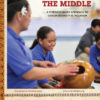
A Place in the Middle is the true story of Ho'onani, a remarkable eleven year old girl who dreams of leading the hula troupe at her inner-city Honolulu school. The only trouble is that the group is just for boys. She's fortunate that her teacher understands first-hand what it's like to be “in the middle” - the Native Hawaiian tradition of embracing both male and female spirit. As student and teacher prepare for a climactic end-of-year performance, together they set out to prove that what matters most is what’s inside a person’s heart and mind.
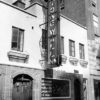
This lesson plan explores the history of LGBTQ Liberation from 1959 - 1979, and is a companion to the exhibit "Stonewall 50: The Spark That Lit the Flame" from the Center on Colfax's Colorado LGBTQ History Project. It includes primary sources and panels from the exhibit designed to weave together, in cooperative small-group learning, the narrative of Stonewall with the LGBTQ history of Denver. Students will use primary sources not widely available, and will understand the context leading up to Stonewall and the changes which occurred there after. From the Mattachine Society, the Black Cat Tavern and Compton's Cafeteria Riot, to the Denver Gay Revolt, Harvey Milk, as well as a detailed timeline of the riots, and the diverse voices there-in. Your students will be among the first generation of Americans to know and tell these stories. Their words will shape the future and change the world. (Includes: Bibliography, Teacher Resources, Understanding By Design, Colorado Content Standards Aligned, Grades 8-12). During this lesson students will answer a question open to historical debate "Why were the Stonewall riots the moment that sparked the LGBTQ Liberation Movement in American History?" Students will then be given panels from the Stonewall 50 history exhibit talking about the history of Stonewall: the events leading up to Stonewall, the events of the riots themselves, and the events and organizations that developed after the riots, such as the Gay Activist Alliance (GAA) and Gay Liberation Front (GLF), as well as the first Denver LGBTQ pride event, and the National March on Washington for Gay & Lesbian Rights in 1979. Students will be given 15 minutes to read panels from the exhibit underlining the important names, dates and events. Students will then share what they learned. Students will then create their own posters outlining the events of the riots as a formative assessment.
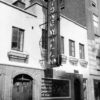
In the early hours of June 28, 1969, a police raid of the Stonewall Inn exploded into a riot when patrons of the LGBT bar resisted arrest and clashed with police. The Stonewall Riots are widely considered to be the start of the LGBT rights movement in the United States. In this lesson, students analyze four documents to answer the question: What caused the Stonewall Riots?

In this lesson, students will learn about changes and continuities in the 1920s, particularly focused on cultural and social areas. Students will analyze primary and secondary sources that explore race, gender, and sexuality in the 1920s.
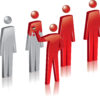
In this lesson students learn about the divers perspectives and organizations that shaped the movement for LGBTQ equality from the 1950s through the 1970s. Students will participate in a simulation where they play the role of members of specific, historically significant organizations that emerged in the LGBT movement between 1950-1970s, trying to form a united coalition and make decisions about the big political questions of the day. Students will have to collaborate to write and present statements that represent their organization’s perspective in a political conference that will last 3 rounds. In each round they will discuss and debate a major event/topic in the historical LGBT movement. Then they will vote on proposals. Ostensibly, the group will try to reach consensus but the goal is greater understanding of the arguments, experiences and material conditions that shaped the movement. This lesson aligns with LGBT history month and could be incorporated into a larger unit on the Civil Rights movement (understanding the mechanics of movement building, how oppressed groups achieved civil rights). Students will be able to: analyze the historical context and major political ideas in the movement for LGBT right between 1950-1975. Students will read, discuss and analyze primary and secondary source historical documents in small groups. Students will collaborate to write and orally present historical arguments in a simulated political conference.
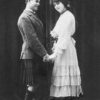
Students will engage in quote analysis, photo analysis, letter reading, and collaborative group discussions to answer the inquiry question, understanding the role that cross-dressing played in various soldier camps during World War I.